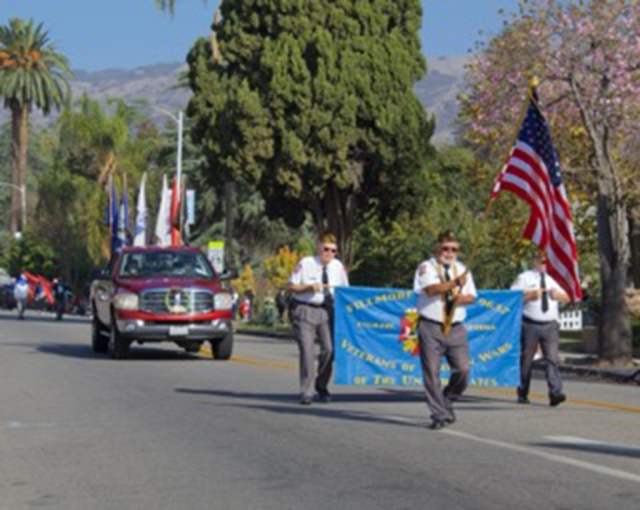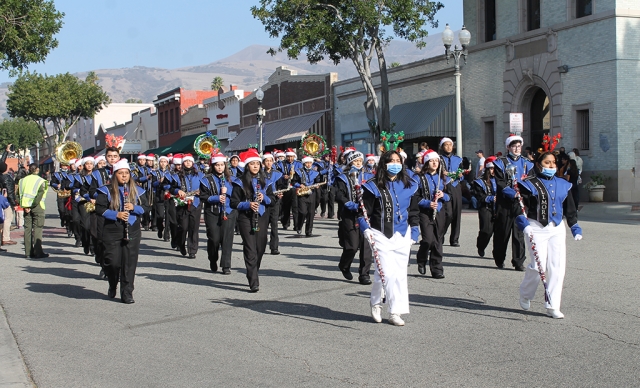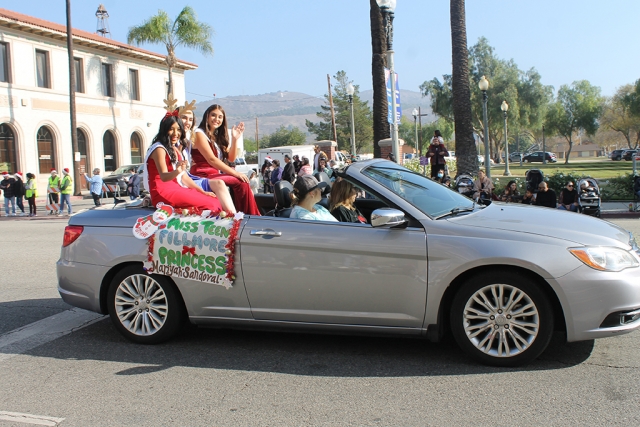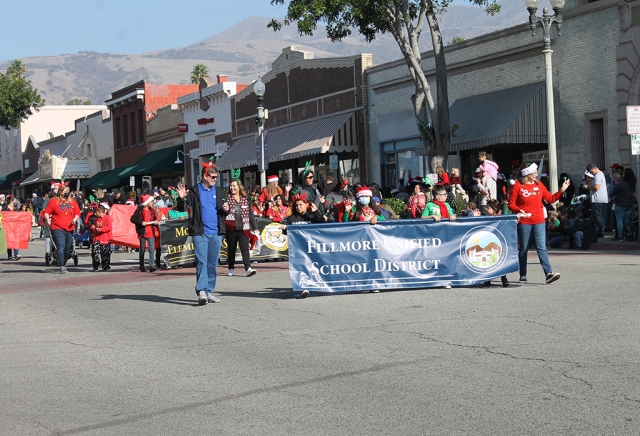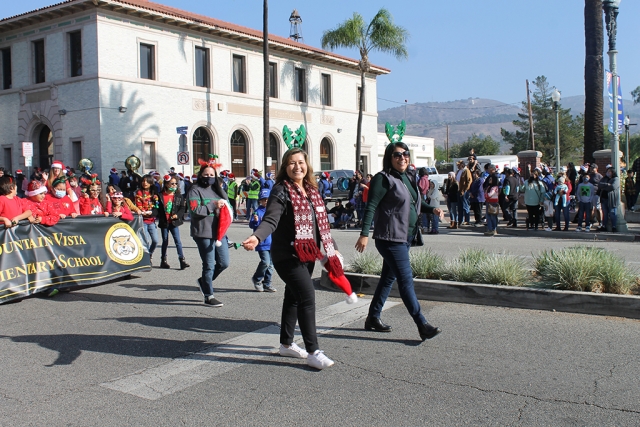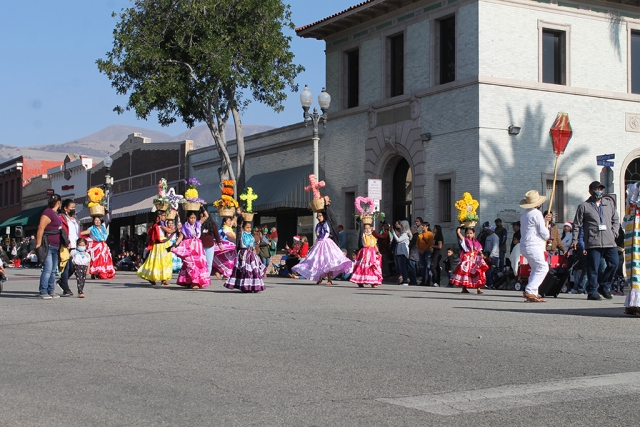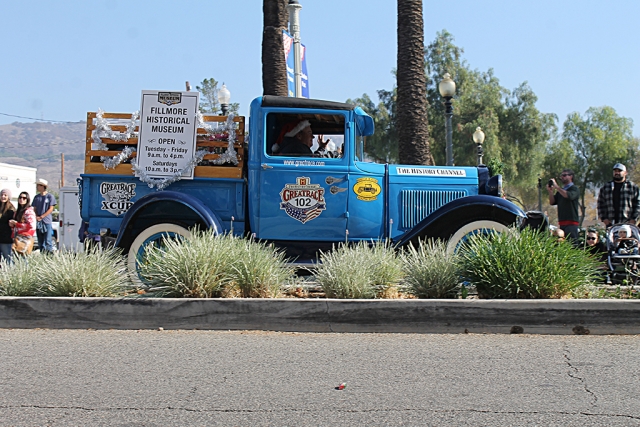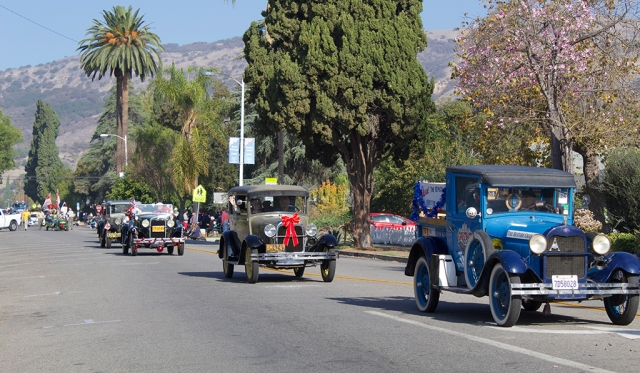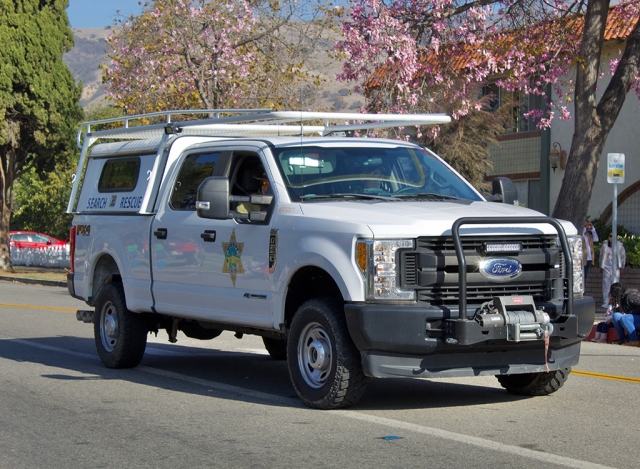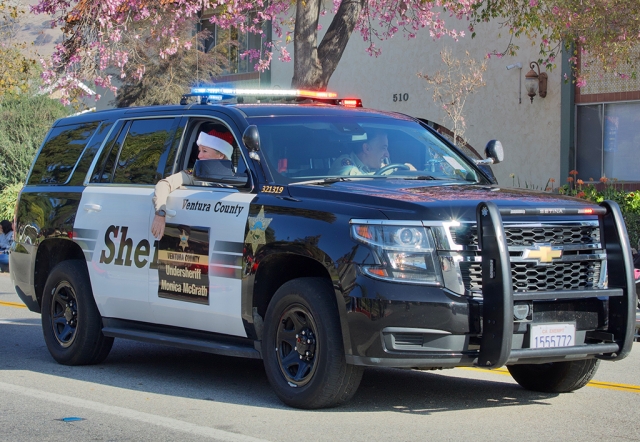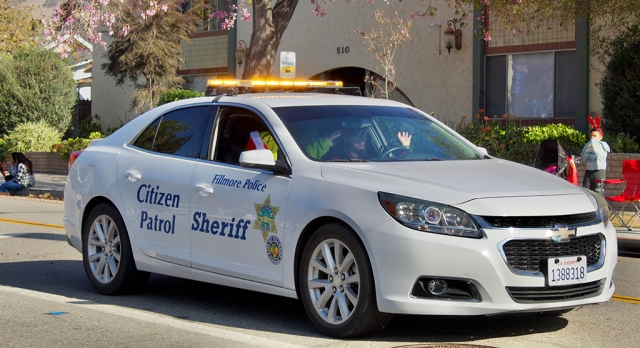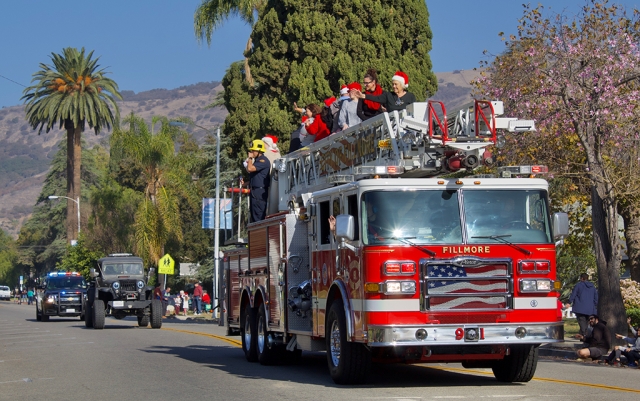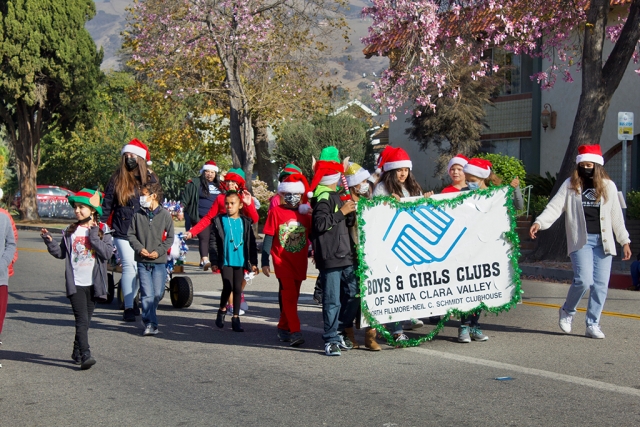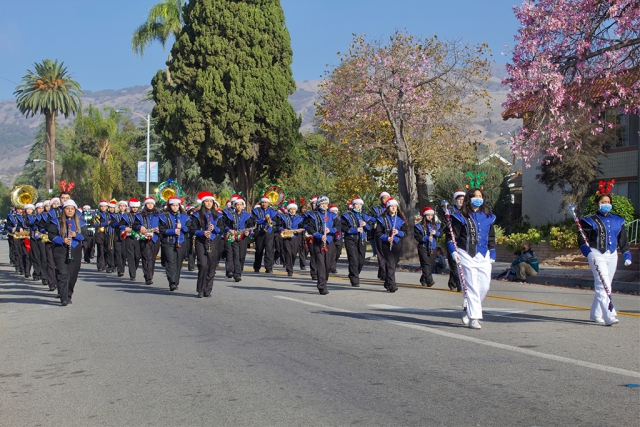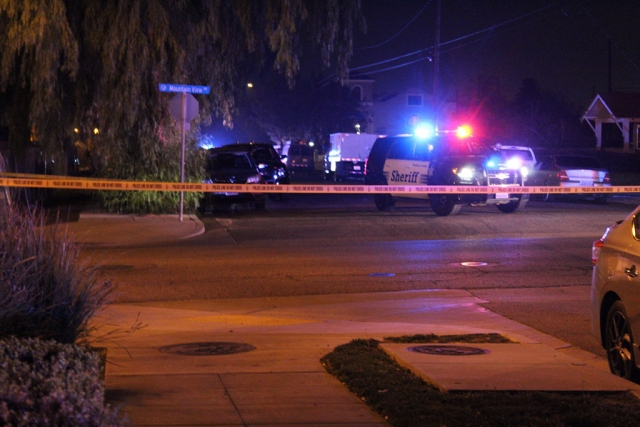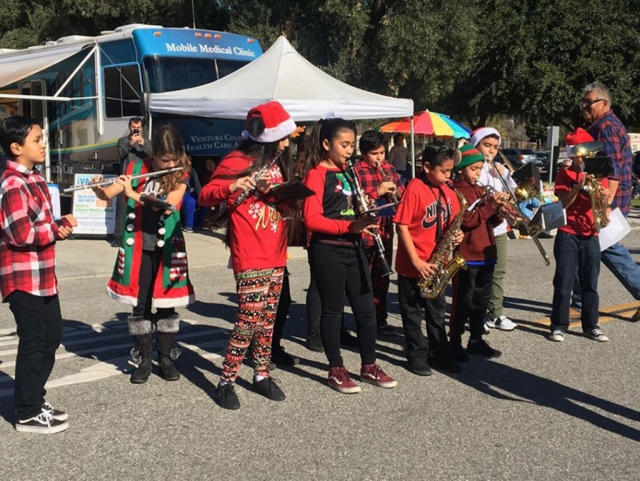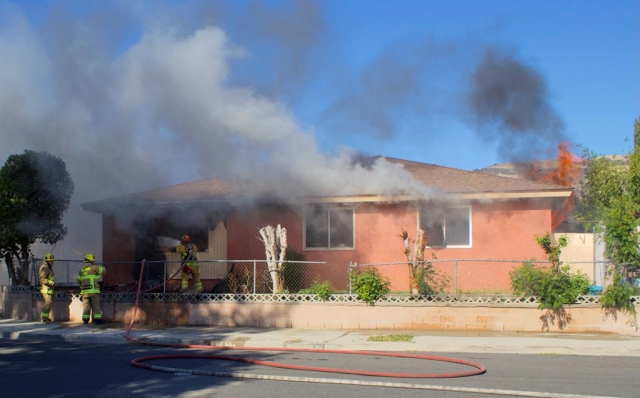|
By Gazette Staff Writers — Thursday, December 16th, 2021
 Japanese bunkhouse/dormitory, circa 1914. The bunkhouse housed unmarried Japanese workers, and the dormitory was opened to the outside rather than to an interior hall. Photos courtesy Fillmore Historical Museum. Enlarge Photo  Rancho Sespe Headquarters with Bunkhouse #2 facing north and Bunkhouse #1 facing east, circa 1925. Enlarge Photo Courtesy Fillmore Historical Museum The Rancho Sespe Bunkhouse #2 is one of thebuildings at the Fillmore Historical Museum and houses a major portion of our collection. It was moved to its current site in 1995 having been donated to the Museum by James P. Finch who had bought the Rancho Sespe headquarters parcel. As the name implies, this was not the first bunkhouse on Rancho Sespe, in fact it was the third. All of the bunkhouses were built while the property was owned by Eudora Hull Spalding who had inherited half the property from her father and had subsequently bought out her brother’s share and became the sole owner of the 2,200 acre tract. By the time of her death in 1942 the ranch had been expanded to 4,300 acres and had become an internationally known showcase for its advances in citrus cultivation. Besides citrus, it grew walnuts, hay, beans and other crops as well as including pasture lands for its horses and cattle. It was a self-contained community which employed over 200 people. From 1911 to 1919 three bunkhouses were built to house unmarried workers. The architecture firm of Greene and Greene of Pasadena was hired to design Rancho Sespe Bunkhouse #1 which still stands at the former headquarters site approximately 4 miles west of Fillmore. The actual design was probably done by a draftsman at the firm which was best known for designing Craftsman style bungalows such as the Gamble House in Pasadena and not utilitarian bunkhouses. The primary builder of the bunkhouse was Harry Peyton who had come to Fillmore with the Southern Pacific Railroad. In the March, 1918 edition of California Citrograph, Sespe Ranch Manager Walter H. Fleet described the bunkhouse as a“two-story building, 80ft. by 45 ft., and consists of a large living room, dining room for the general class of employees, private dining room for officials, kitchen, washroom, three bathrooms, three toilets, linen room, storeroom and 20 separate sleeping rooms on the second floor…. Each room has a large window and is furnished with following: one iron bed and springs, one mattress, two sheets, two blankets in summer and three in winter, one pillow, one white pillow cover, one bedspread, one chair, one table and closet with a curtain as dust protector…. Clean sheets for the beds are furnished twice a week, and clean towels in the washroom are furnished every day…, Hot water for the baths is furnished twice a week. The method of heating is by stove distillate burners, which heat a 200 gallon tank very quickly. In the living roomthere are card tables, a large library billiard table and large wood heating stove.” For its time, the Rancho Sespe Bunkhouse #1was an especially comfortable bunkhouse with modern conveniences. We do not know as much about the second dormitory’s history but know it was built by 1914. This bunkhouse housed unmarried Japanese workers. The dormitory was similar to Bunkhouse #1, but the rooms opened to the outside rather than to an interior hall. Again according to Walter Fleet: “The building contains a living room, dining room, large kitchen with Japanese cook stoves, 10 sleeping rooms upstairs and four downstairs….The ranch furnishes one bed and springs, one mattress, one table, one chair. The occupants furnish their own bedding and board themselves. In the dining room are two long tables and seating benches for 50 people. One feature of the Japanese quarters is their large bathhouse. This building is 40 ft. by 27 ft. with cement floor throughout. Here are located the toilets and washroom, and in the center is a large concrete tank for bathing 10 ft. by 3 ft. deep. Hot water is furnished by a wood or oil heater which heats a tank of 300 gallons. There are also two shower baths in the building.” The third bunkhouse, Rancho Sespe Bunkhouse #2 which now is part of our Museum, was built in 1919. Again we believe that Harry Peyton was the primary carpenter but this has not been confirmed. The twenty-eight sleeping rooms were similar to the ones in Bunkhouse #1. Toilet facilities were provided in Bunkhouse #2, but the workers used the dining, recreation and shower facilities in Bunkhouse #1. In 1937, Edward Wyman Spalding, a cousin of Keith Spalding, had just gotten out of the Navy and came to work as a ranch hand at Rancho Sespe. He lived in one of the bunkhouses and in the Ventura County Historical Quarterly, Volume 38, 1993, described the experience thusly: “We all breathed the same air. And heard the same sounds. At least on Sundays. Each of the other men, it seemed, had his own radio, little things – we’d call them antiques now – and all through the week when we weren’t at work, each of those radios would have its own music, what we’d call “country” now. It was fairly chaotic. But not on Sunday. Sunday all of those little jobs would be tuned to Aimee Semple MacPherson’s “Foursquare Church,” and Aimee’s voice would be echoing off the rafters. Loud. Very Loud.” Change the music being played and the Sunday sermon, and it sounds very much like a college dormitory. |
|
By Gazette Staff Writers — Wednesday, December 8th, 2021
 On Saturday, December 4th, at 10am, the Fillmore Lions Club held their Annual Christmas Parade. Crowds of people lined up along Central Avenue to enjoy the fun. Santa and Mrs. Claus took a ride on the back of Fillmore Fire Engine 91 along with Fillmore City Council Members to end this year’s parade. Photos courtesy Angel Esquivel-AE News. Enlarge Photo |
|
By Gazette Staff Writers — Wednesday, December 8th, 2021
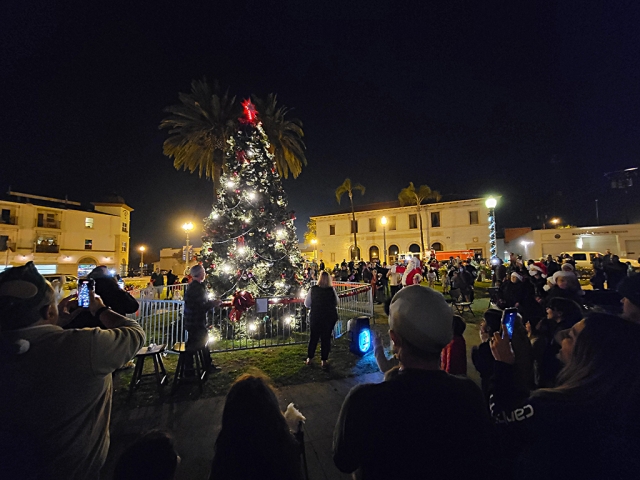 A huge thank you goes out to our community organizations that made this 30-foot Christmas tree possible for the holiday season, as well as to our amazing Fillmore Fire Department who assembled and decorated the holiday tree for all to enjoy. The City of Fillmore’s Holiday Tree Lighting held at Central Park was on Wednesday, December 1st. The festivities began with lighting of the tree and live music for all to enjoy. Thank you to all the sponsors and performances: Fillmore Association of Businesses- FAB Page, Sespe Creek Bible Church, Bardsdale Methodist Bell Choir and Fillmore City Fire Department. Courtesy City of Fillmore Facebook page. Enlarge Photo |
|
By Gazette Staff Writers — Wednesday, December 8th, 2021
 On December 1st, 2021, at 6:20pm, Ventura County Sheriff ’s were dispatch to a reported shooting that had just occurred in the area of Mountain View and Main Street. Arriving units found evidence and set up police tape around the intersection. No gunshot victim or injuries were reported at the time of the scene. No other additional information has been provided. Photos courtesy Angel Esquivel-AE News. Enlarge Photo |
|
By Gazette Staff Writers — Wednesday, December 8th, 2021
 It is finally time—again!! Come and join us for our Annual Piru Christmas Parade & Festival. This year’s theme is “Nightmare Before Christmas” chosen by students at Piru Elementary. There will be live entertainment, toy raffles, cornhole tournaments, food vendors and so much more on Saturday, December 11th at noon, with a festival to follow. Above and below are photos from a previous Christmas parade. Courtesy Piru Neighborhood Council Facebook page. Enlarge Photo |
|
By Gazette Staff Writers — Wednesday, December 8th, 2021
 Fillmore’s Shiells Park is closed 12/17/2021 – 1/28/2021 due to necessary maintenance. Courtesy City of Fillmore Facebook page. Enlarge Photo |
|
By Gazette Staff Writers — Wednesday, December 8th, 2021
 The Rotary Club of Fillmore enjoyed another year of their Dictionary Giveaway Project. All 3rd graders from Rio Vista Elementary, Piru Elementary, San Cayetano Elementary and Mountain Vista Elementary received a dictionary. Above are 3rd graders from Mountain Vista Elementary with their dictionaries. The Rotarians who participated in this project were: Cindy Blatt, Jerry Peterson, Jan Bryant, Dick Richardson, Julie Latshaw and Martha Richardson. Courtesy Rotarian Martha Richardson. Enlarge Photo |
 Help us capture these stories so people fifty years from now can smile when they read the stories from “the old days.” Above is Oscar De Fever’s Christmas Tree, somewhere in the Pacific, World War II. Courtesy Fillmore Historical Museum. Enlarge Photo By Gazette Staff Writers — Wednesday, December 8th, 2021
Courtesy Fillmore Historical Museum This week we are turning the tables on our readers. Instead of telling a story about our area’s history, we are asking you to tell us your stories. We want to hear about special holiday celebrations. It doesn’t necessarily need to be from years ago or even from Christmas holidays. Maybe it’s a story about a child’s first Christmas or the time the dog ate the Christmas turkey. Or maybe about that deployment when you weren’t home for Christmas. A favorite Christmas story of mine is my niece, who was two at the time, showed she understood that Christmas was a time for sharing. We were out for Christmas breakfast and she was trying to share her pancake with anyone walking by. Oddly enough she didn’t have many takers. The story can be funny, sentimental, or just a special memory. They can be short or long, whatever is necessary to tell the story. You can post them as a response on Facebook or send them to us at Fillmore.museum@gmail.com They can be written or recorded. If you have a photo to illustrate the story that would be great. |
|
By Gazette Staff Writers — Wednesday, December 1st, 2021
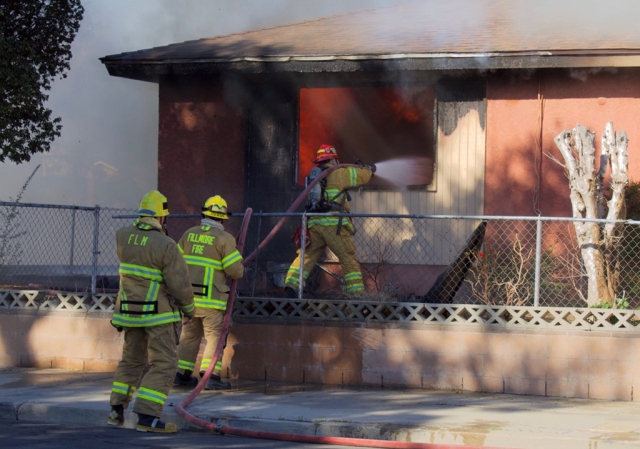 On Thanksgiving Thursday, November 26th at 11:50am, Fillmore Fire and Sheriff’s responded to a house fire in the 400 block of Market Street. Once on scene, it was evident flames and smoke had already consumed much of the home, causing major damage. Crews worked quickly and were able to extinguish the flames before the gusty winds picked up. Origin of the fire is under investigation. Enlarge Photo |
|
By Gazette Staff Writers — Wednesday, December 1st, 2021
Ventura County has been served well by Sheriff Bill Ayub for the past three years. He handled the dual challenge of the devastating Woolsey Fire and skillfully dealt with the horrible loss of life during the Borderline incident. We residents of the eastern part of the county have enjoyed a very low crime rate due to Bill’s anticipation of potential problem areas. He leads a truly first rate team, from Undersheriff Monica McGrath to the newest deputy. As a resident of Fillmore I get a close look at police activity every day due to the location of our Sub Station and my regular travels around town. Sheriff Bill Ayub is at the helm, successfully serving as our keeper of the peace, making Fillmore the safest city in Ventura County. For these reasons, I join former Sheriff Larry Carpenter in wholeheartedly endorsing Bill Ayub for a second term as Sheriff of Ventura County. |




